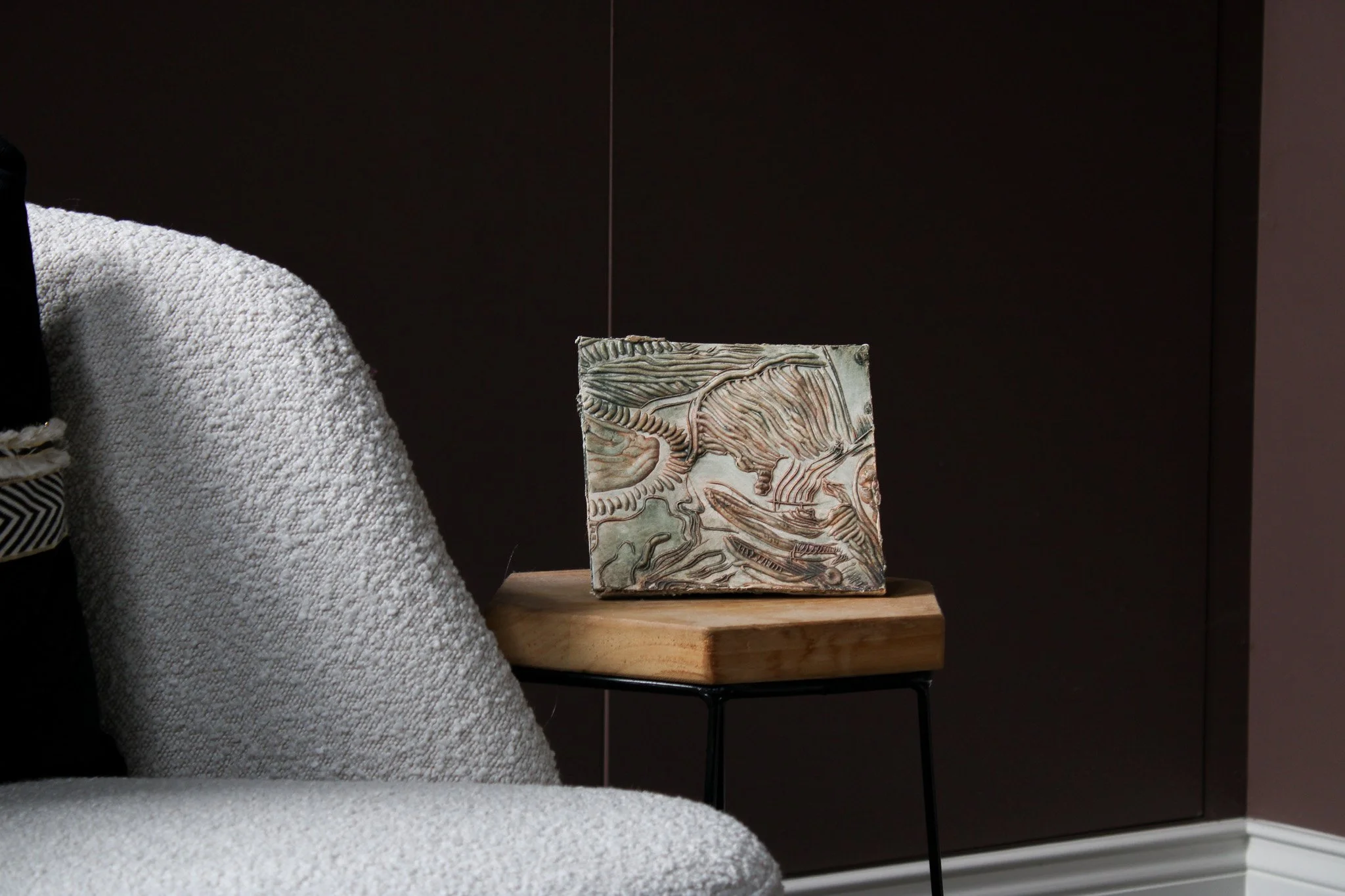Linocutting is a traditional technique in printmaking, rather than focusing on this proces, Nys uses the linocuts as molds to create tactile pieces that add both a visual and physical dimension to his work.
-
The Tijdstroom series, started in 2020, stems from Arne’s fascination with the constant movement of rivers and water. The linocut technique captures this rhythmic flow, creating a dynamic tension between the planes of the artwork. In the early pieces, movement was the central theme, exploring time, change, and the fluidity of nature.
As the technique developed, the themes expanded to explore energy flowing through time and space. The use of plaster adds subtlety, emphasizing texture and depth while enhancing the interplay of light, shadow, and surface. This tactile element invites viewers to engage with the works more physically, highlighting rhythm, power, and stillness. The shifting light and color continue to play a key role in the series, inviting the viewer to experience the passage of time itself.
-
In this series, the focus shifts to inner, imaginary landscapes. The mental and emotional currents that can unfold within the mind. The works often contain figurative elements, allowing organic forms and intuition to flow freely. The landscapes symbolize the mental and emotional processes that take place in the human psyche. The works often invite reflection on the delicate balance between human structures and nature, highlighting the constant threat and destruction they entail, while also visualizing the tension and beauty within these subjects.
-
In Fragments of the Studio, the physical space of the studio takes center stage. Each relief emerges from a process in which a cast piece is cut into fragments, broken apart, and reassembled. These interventions reflect the dynamics and unpredictability of the creative process. The rhythm of creation, deconstruction, and restructuring is expressed in the reliefs, capturing both the energy of the making process and the transformation of the work itself. The contrast between hard and soft, solid and liquid is visible in the textures and shapes, with the process of change reshaping the physical material in new ways.



